Next giant leap: After claiming their place in space women run the show back on Earth
Fifty years ago, women trained for spaceflight, but no one could imagine a woman astronaut.
Women employed by NASA made significant contributions to sending men to the moon but remained mostly invisible and accounted for a small percentage of the workforce. The first executive position to be held by a woman at NASA wouldn't be filled until 1972.
Now, three of NASA's top record-holders for most time in space on a single mission are women.
Peggy Whitson holds the agency's top record for the most time in space by anyone. She was the first woman to command a mission to International Space Station in 2007, and now, she is the first woman to command a private astronaut mission to the space station with Axiom Space and SpaceX.
Women in Space: 60 years ago, women broke the ceiling to space. More are flying with every mission
Trailblazer: 40 years later Sally Ride's legacy lives on through NASA's Artemis program
Mercury 13: Meet the first unofficial class of women astronauts
NASA's Artemis program: Space seeks more inclusion, embracing women on journey back to moon
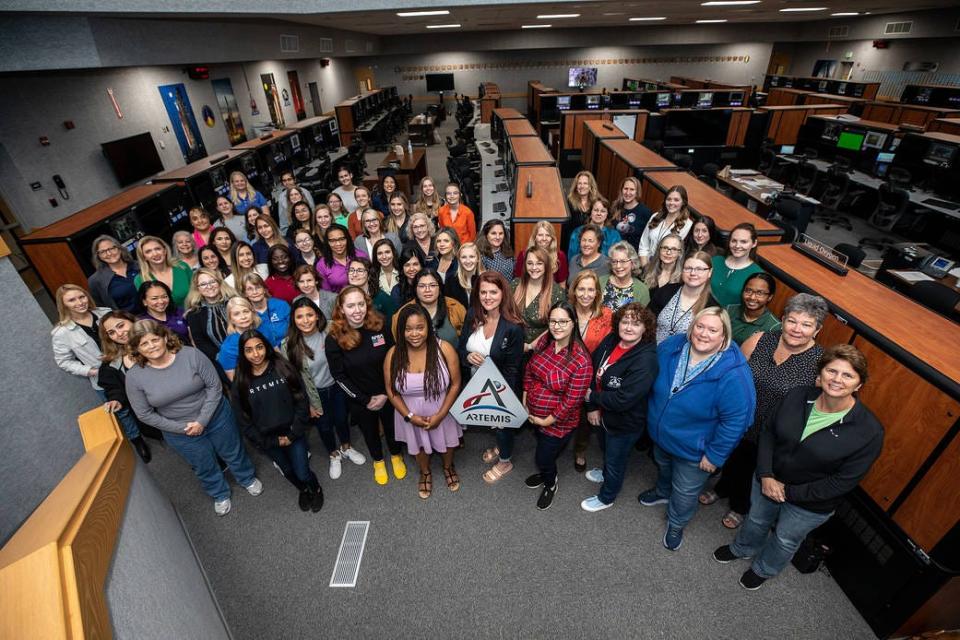
Today, women account for about 40 percent of the agency's workforce, seven of the agency's ten centers are led by women directors, and women sit at the helm of prominent commercial spaceflight companies like SpaceX.
Meet some of the most influential women leaders making a difference in the space sector today:
Pam Melroy, NASA Deputy Administrator
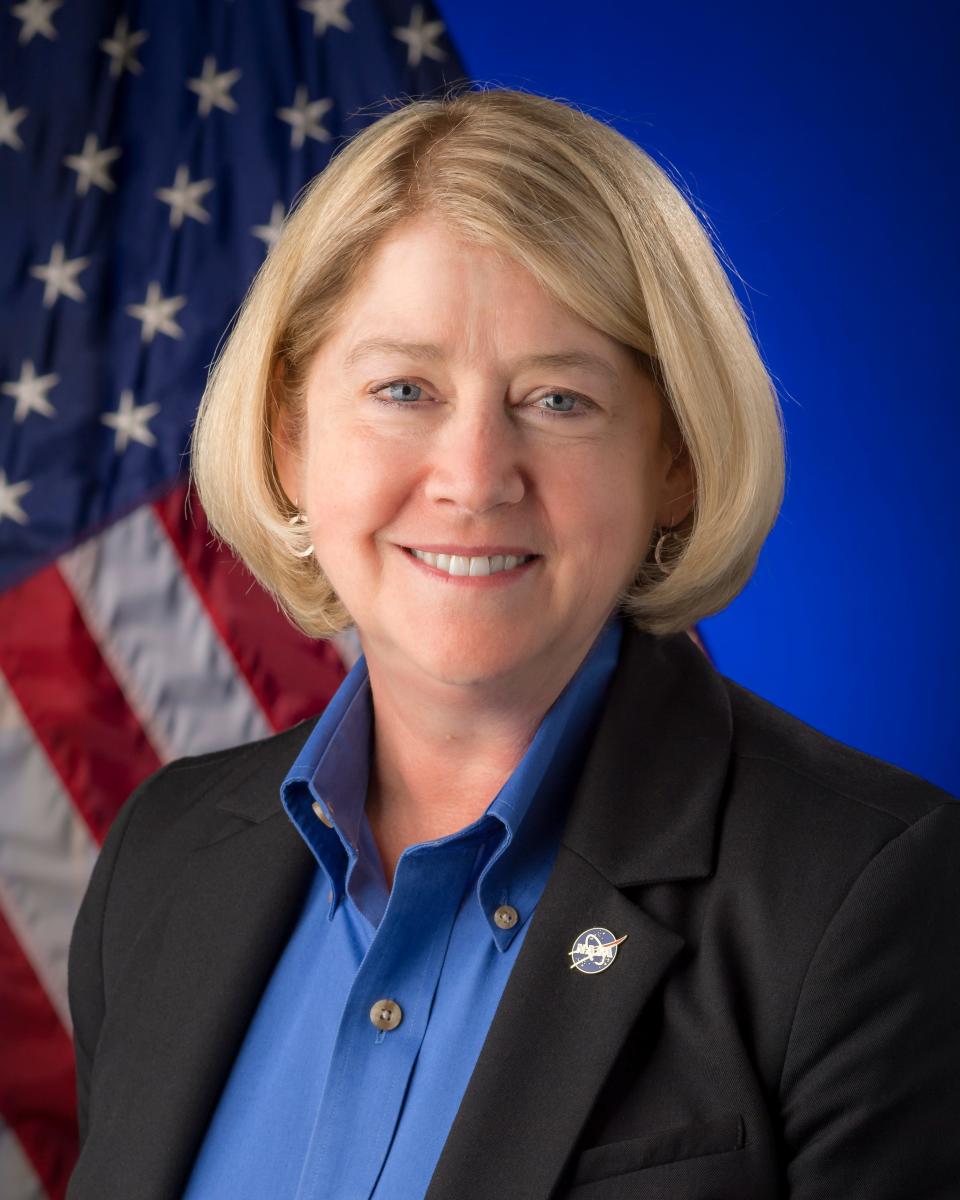
Pam Melroy, former astronaut and retired Air Force colonel with more than 6,000 flight hours in more than 50 different aircraft, is NASA's deputy administrator, the second-highest executive position at the agency.
She was selected by NASA for astronaut duties in 1994 and went on to log 38 days in space and become one of only two women to command missions aboard the space shuttle.
As the agency’s second-in-command to NASA Administrator Bill Nelson, Melroy weighs in on all agency-wide decisions and operations. She reports on the state of the agency to the president and vice president.
Vanessa Wyche, NASA Johnson Space Center Director
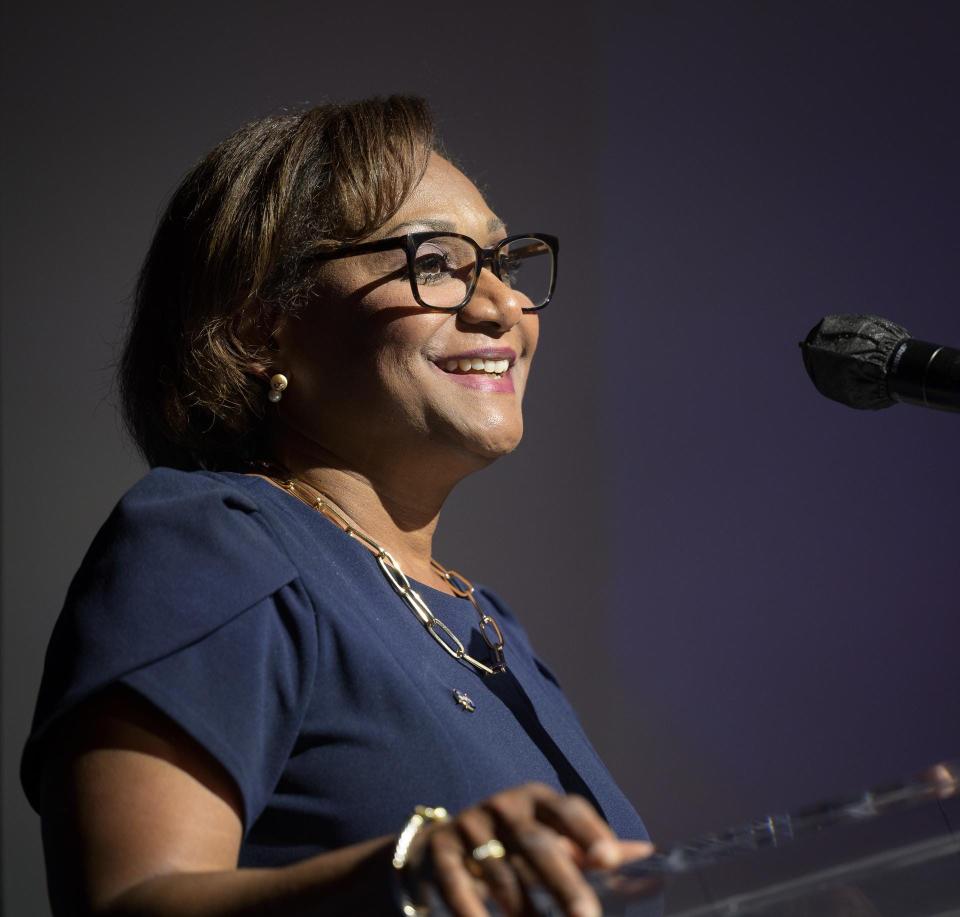
At NASA's Johnson Space Center in Texas, where all agency astronauts live, work, and train for missions, Director Vanessa Wyche said there were challenges on her way to the top.
"It wasn't always a step up or making it on the first try," Wyche said. "The glass ceiling is real. While I had the experiences or credentials, the environment was not such where I was able to move to the next level."
Wyche was raised in South Carolina and found inspiration in her mother, a teacher, and mother to five children. She also looked to her grandmother, a business owner in the 1950s, "which was unheard of and to me is just amazing," Wyche said.
She earned a bachelor's degree in engineering and a master's in bioengineering from Clemson University before joining NASA in 1989.
"When I started at the Johnson Space Center, I was the first woman that had a permanent assignment in my engineering branch," Wyche said. "The number of women has increased gradually. Now our technical workforce is about 25% women."
She credits the progress to the agency's intentional efforts to promote equity and diversity through employee resource groups and leadership cadres that focus on opportunity development. She also believes there has been an increase in the diversity of people pursuing technical degrees at universities.
"That pipeline coming in also adds to the ability for us to have more women in (these) positions," Wyche said.
Rocket launch schedule: Upcoming Florida launches and landings
Space Station mission: SpaceX launched an uncrewed Dragon mission to the ISS from Kennedy Space Center
Janet Petro, NASA Kennedy Space Center Director
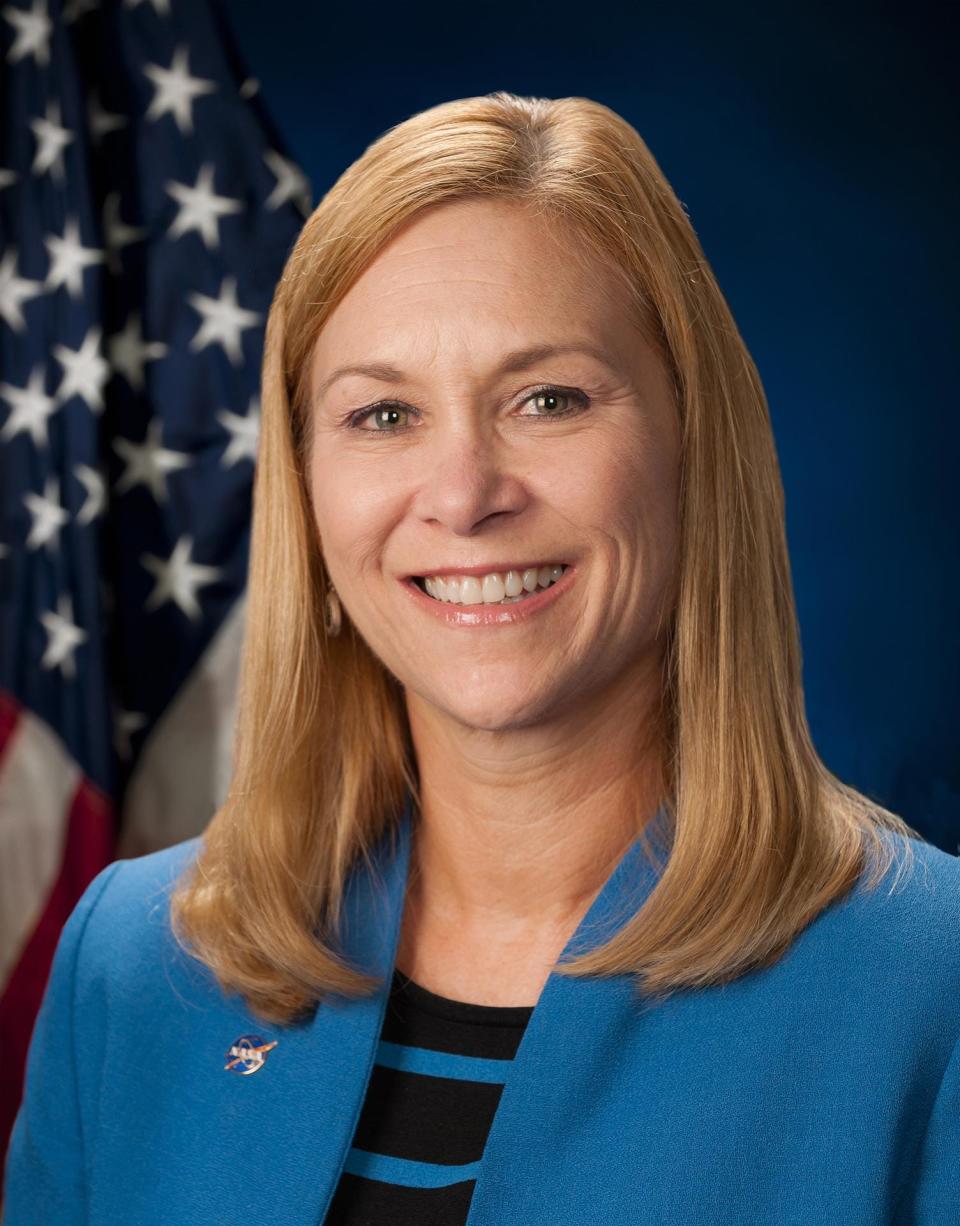
Creating opportunity is a guiding principle for Janet Petro, the first woman director of NASA’s Kennedy Space Center in Florida, where a Saturn V rocket carrying the Apollo 11 mission launched on July 16, 1969.
Petro graduated from the U.S. Military Academy at West Point as part of the second co-ed class in 1981. She earned a bachelor's degree in engineering and went on to serve in the Army.
After serving as deputy director at KSC since 2007, she was appointed as the center's 11th director in June 2021. She said she was often the only woman at the table during her time in the military and through her experience working at NASA during the space shuttle program.
"Going up through West Point and in the Army, there wasn't a whole bunch of women, so I got a thick skin; I didn't let anything affect me," Petro said. "I made sure I was sitting at the table being a leader."
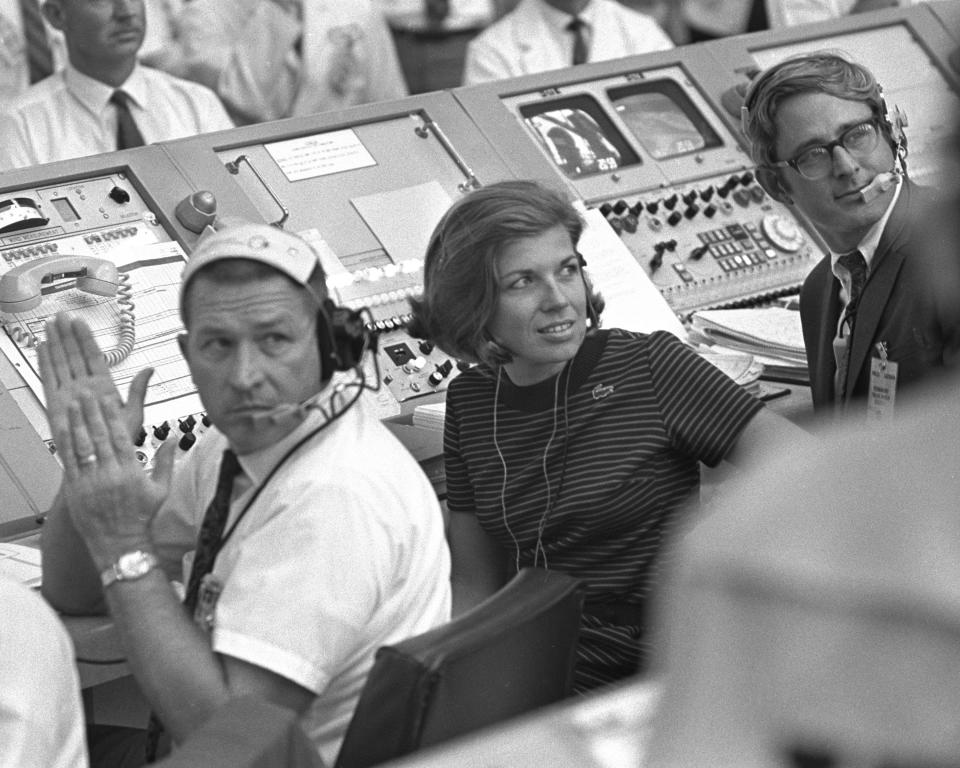
Petro calls herself a servant-leader who tries to lead by example and uses her position as a springboard to help others.
"I was very, very proud of the Kennedy Space Center when we had 50% of our senior executive service positions were filled by women," Petro said. "That was an intentional effort to ensure that women got the correct developmental assignments, the right opportunities, and the right experience in order to be able to be promoted in those positions."
"It's needed for other women within the ranks to see they too can achieve that," she said.
That's a far cry from the days of Apollo. When Apollo 11 launched, just one woman, JoAnn Morgan, was allowed to work inside the launch control firing room alongside nearly 450 men. Fifty-four years later, NASA’s Artemis program aims to return humanity back to the moon, but this time with women and people of color onboard.
Charlie Blackwell-Thompson, NASA Launch Director

On November 16, 2023, the firing room for the Artemis I mission was under direct leadership of NASA’s first woman launch director, Charlie Blackwell-Thompson. She gave the final “go for launch” command, sending the agency’s massive 322-foot Space Launch System rocket on a path to the moon.
Blackwell-Thompson has worked at KSC since 1988, when she graduated from Clemson University with a degree in computer engineering. She first worked as a software engineer with Boeing before joining NASA in 2004 as a test director and then as chief test director of the space shuttle program through 2011.
In 2016, she was named NASA's first woman launch director. She not only oversees launch, but the entire launch integration team, which comprises three programs: the Space Launch System rocket, Orion crew capsule, and Exploration Ground Systems at KSC.
To Blackwell-Thompson, leadership is about creating opportunities for her team members.
"There were very few opportunities to have a woman mentor in the early stages of my career, so today, I look around and I'm a very active mentor," Blackwell-Thompson said. "It's really important to me to be able to do that because I know that wasn't something that was really available to me until much later in my career."
Beyond being a mentor, Blackwell-Thompson is also an advocate for the people she leads. That’s something that the assistant Artemis I launch director, Jeremy Graeber, admires about his boss.
“One of her things she was most proud of was when I got to launch (space shuttle mission) STS 132,” Graeber said. “I didn't have to get the opportunity to do that launch. But as my boss at the time, she advocated that it made sense, and she did all that work for me so that I could get that opportunity.”
Not only was Blackwell-Thompson the first woman to command a launch and Artemis mission, but she also led a team of launch controllers comprised of 30% women.
“I think that our numbers at Kennedy Space Center, in terms of women in the workplace, women in technical roles, women in leadership, is impressive,” said Blackwell-Thompson. “I applaud our center, and our center director, for the emphasis that's placed on that. I think that is fantastic.”
The Artemis I mission was bookended by Melissa Jones, NASA's landing and recovery director. She led NASA's combined recovery operation with the Navy to retrieve and recover the uncrewed Orion capsule from the Pacific Ocean after it splashed down. She was also responsible for ensuring its safe delivery back to KSC after its 1.4 million-mile journey around the moon.
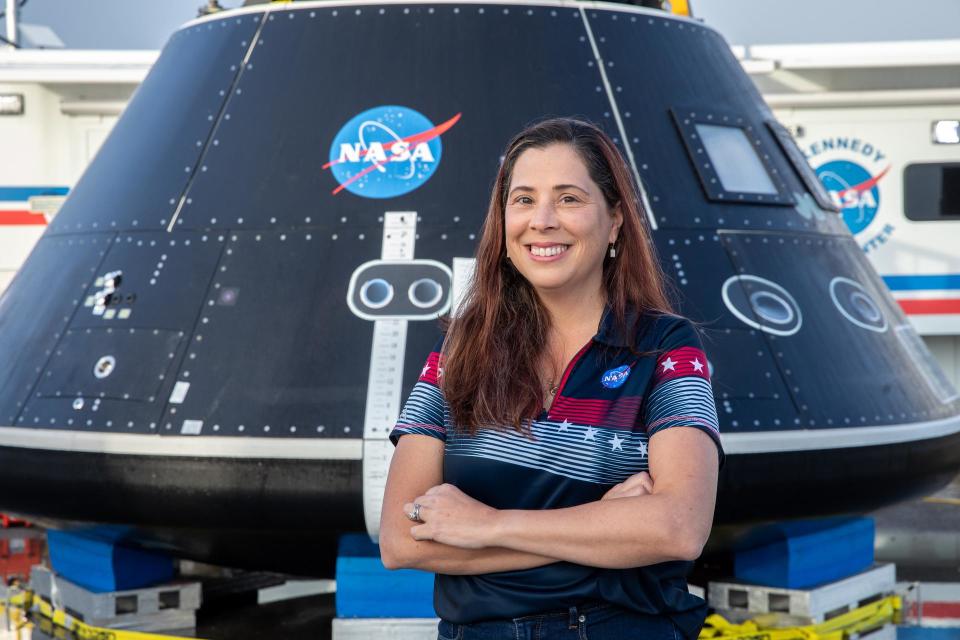
She has since passed the recovery program leadership baton to Lili Villarreal, who will head up all recovery efforts for NASA's Artemis II mission, the program's first to fly astronauts around the moon set to launch next year.
"I got to see Melissa at her best which was lead a team," said Villarreal. "It was great to be there watching her do her job because it really helps me become a better leader too."
Gwynne Shotwell, SpaceX President and COO
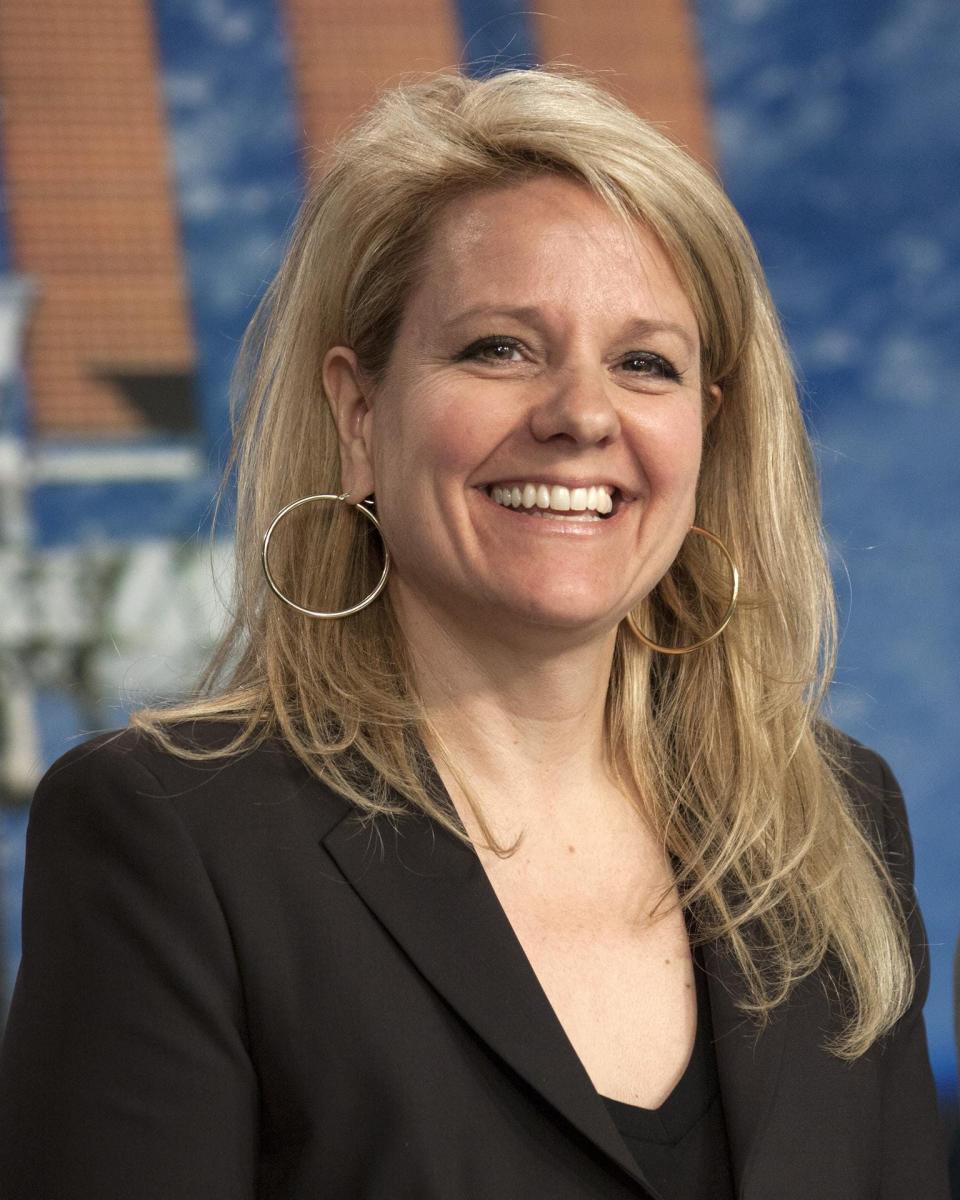
When the Artemis III mission slated for liftoff in the latter half of this decade sends two astronauts back to the lunar surface, SpaceX will play a major part with its futuristic Starship vehicle. The astronauts in an Orion capsule will link up with Starship for the final descent to the lunar surface.
The woman running that show is SpaceX's President and Chief Operating Officer, Gwynne Shotwell.
Shotwell grew up in Chicago and graduated from Northwestern University with a bachelor's degree in mechanical engineering and a master's in applied mathematics. She began working at The Aerospace Corporation in 1988.
She joined Elon Musk's SpaceX in 2002 – the company's founding year – and was appointed president in 2008.
Since then, she's overseen most the work at SpaceX, including the development of the company's Falcon 9 and Falcon Heavy rockets and Dragon capsules, which regularly transport astronauts and thousands of pounds of cargo to and from the International Space Station.
The company was awarded a $2.9 billion NASA contract to develop Starship as the Artemis program's lunar lander. Late last year, NASA awarded SpaceX a second contract valued at $1.15 billion to conduct an uncrewed demonstration mission to the moon prior to the Artemis III mission.
As reported by CNBC in November last year, Shotwell prioritized her focus to head up Starship development at SpaceX's Starbase production facility near Brownsville, Texas.
Laurie Leshin, NASA Jet Propulsion Laboratory Director

Laurie Leshin, the first woman director of NASA's Jet Propulsion Laboratory (JPL) in California, appointed in 2022, changed a well-known JPL motto to reflect her values-driven leadership style.
"We've got a JPL motto called 'Dare Mighty Things,' and I've added the word 'together' because we don't do anything as individuals," Leshin said. "Really everything we're trying to do in the space program is team-based."
She points to Sally Ride, one of her personal friends and mentors, as one of the most impactful women at NASA to chart a course for everyone behind her.
"(Ride) was hugely influential on me as a young woman, and she took that responsibility really seriously," Leshin said. "She understood that with opportunity came a responsibility to women and girls."
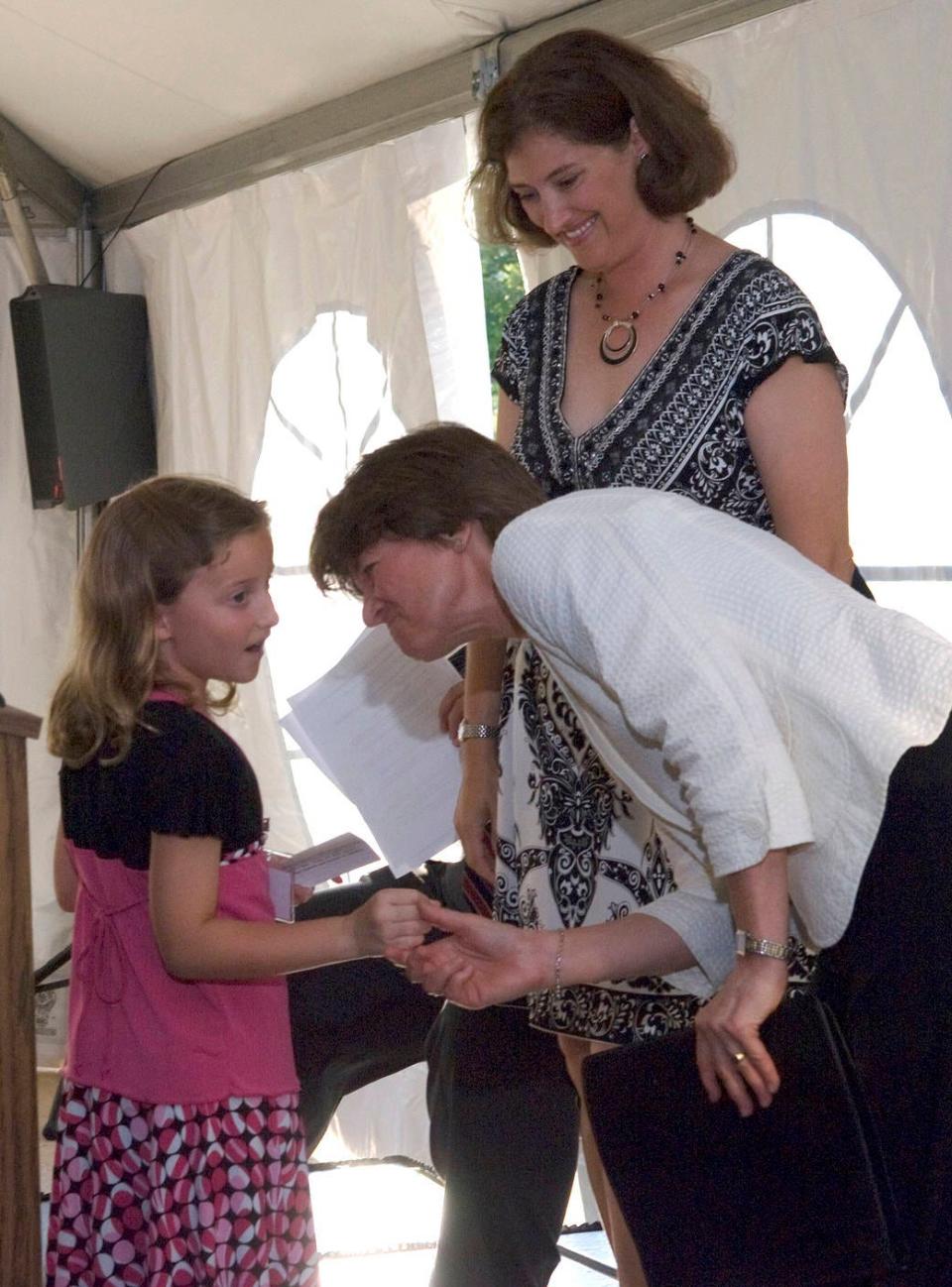
"Now sitting in this seat, as the first woman director of JPL, I know that I'm creating space for others, and (Ride) always tried to do that," Leshin said.
Leshin, like other female leaders in the space industry, realizes making space for women and others creates ripple effects that strengthen the industry as a whole.
"It's a special responsibility to show what's possible and to make positive change from a role like this," Leshin said. "I'm not only the director for the 2,000 women at JPL, which is the most we've ever had, which is very exciting."
"No one person can fly a rover to Mars or send a mission to Jupiter or understand climate change. We've got to do these things as teams, and the more diverse those teams are, the better they are."
Contact Jamie Groh at [email protected] and follow her on Twitter at @AlteredJamie.
This article originally appeared on Florida Today: Meet some of the most influential women leaders of spaceflight
